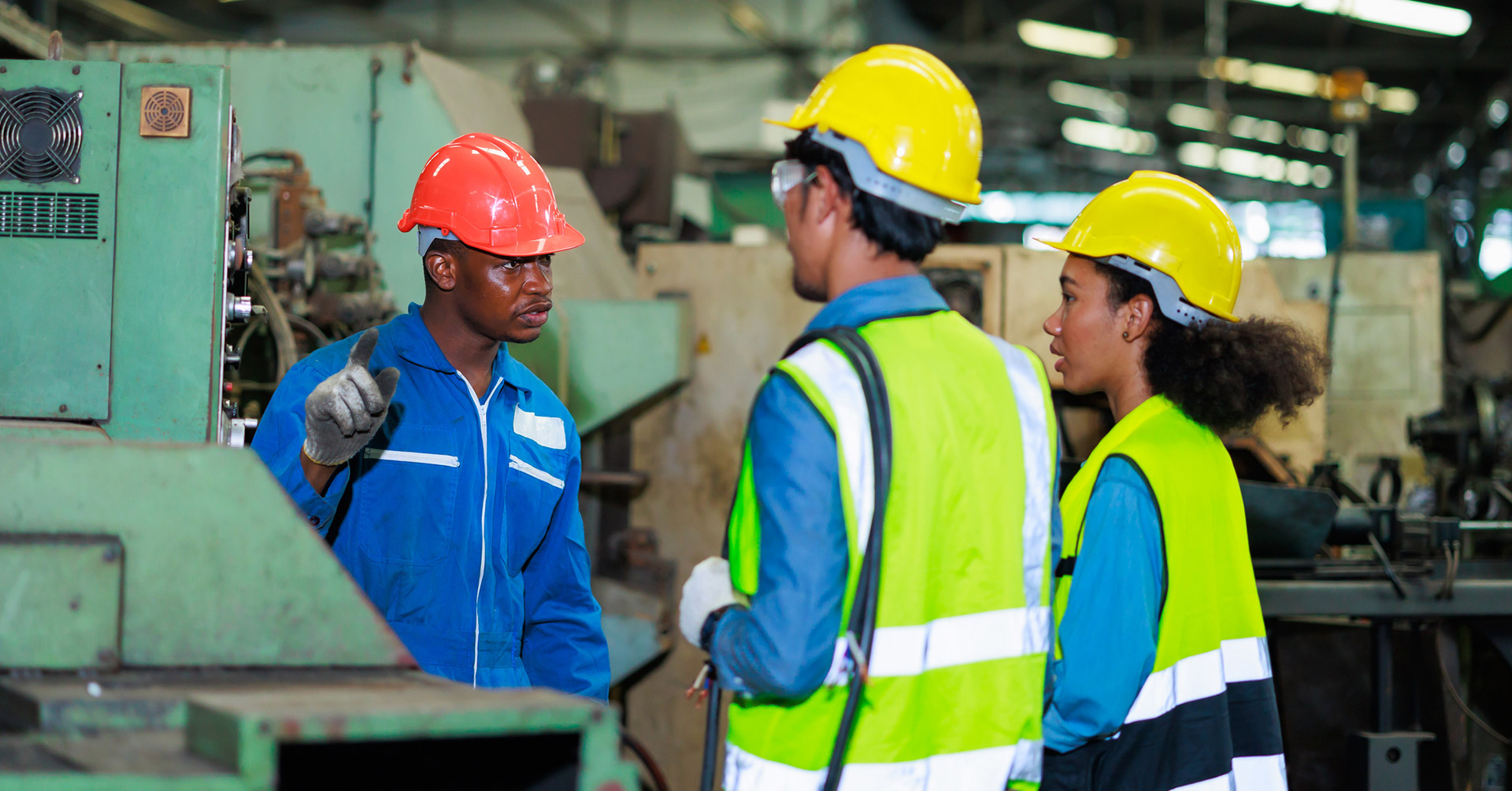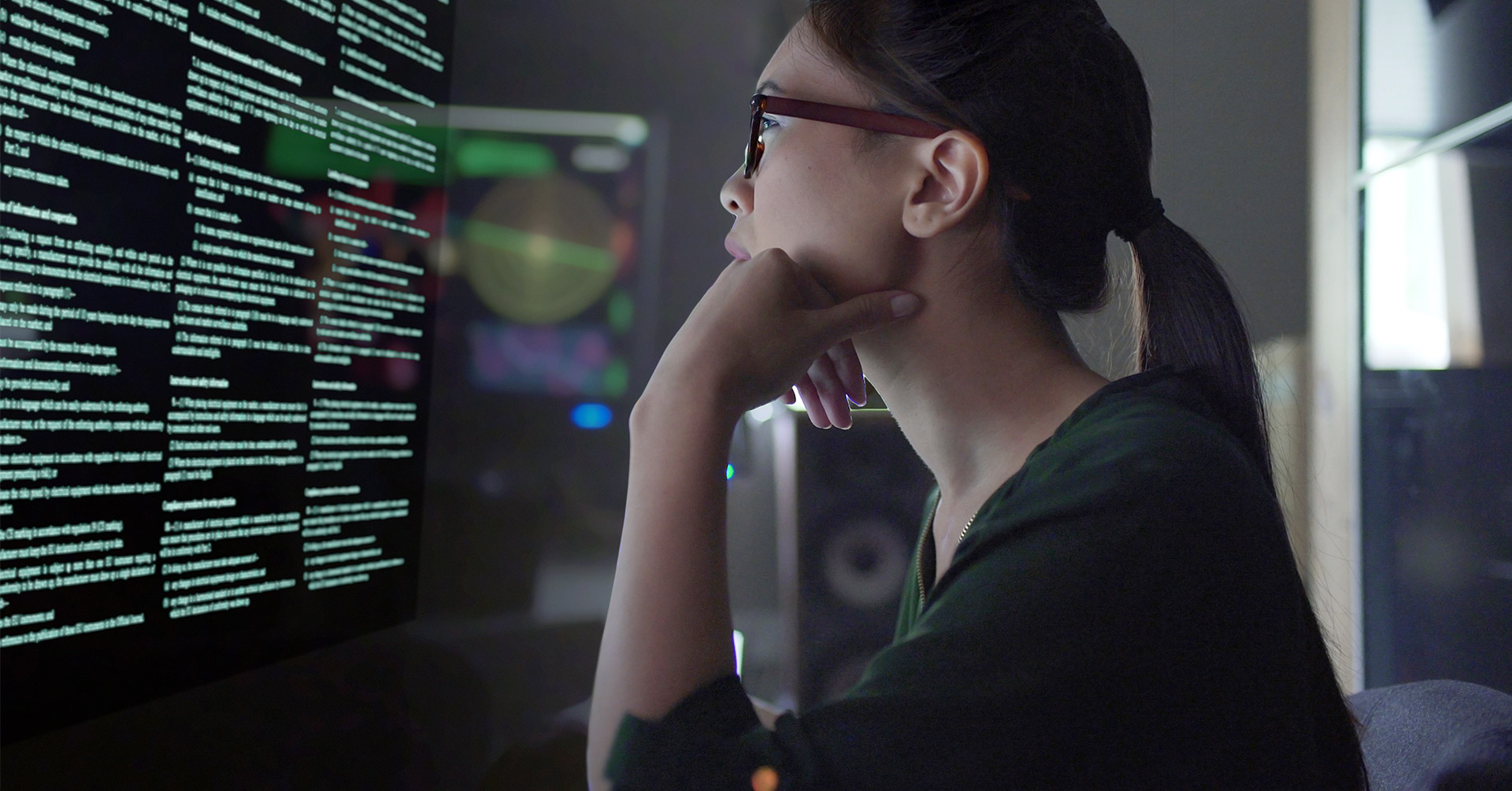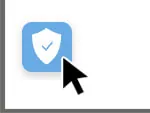
What Is Situational Awareness in the Workplace? (+ Training Exercises)
Situational awareness helps employees recognize risks early, respond decisively, and prevent incidents before they escalate. Discover proven techniques and organizational strategies to build a culture of day-to-day awareness.
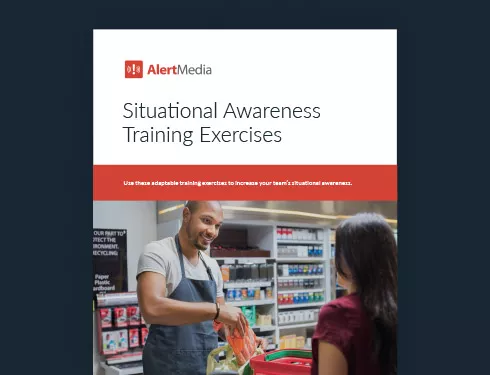
No matter the industry, every workplace is filled with potential risks—some obvious, others easy to overlook. The ability to recognize these threats before they escalate is called situational awareness, and it’s one of the most critical safety skills employees can develop. But awareness alone isn’t enough. For situational awareness to truly take root, organizations must treat it as both an individual skill and a collective responsibility.
This article explores situational awareness from three angles: what it means in the workplace, how employees can strengthen it through proven techniques, and how organizations can reinforce vigilance through training, leadership, and ongoing support. Together, these practices build a resilient workforce where everyone plays an active role in keeping each other safe.
Download Our Situational Awareness Training Exercises
What Is Situational Awareness in the Workplace?
Situational awareness is the practice of actively monitoring your surroundings in the workplace so you can identify threats before they occur and have time to react.
The types of problems you might come across in your daily life are likely to differ from the ones that could occur at work, so it’s important that you remain in the appropriate mindset depending on your location and present occupation.
Structured Techniques and Frameworks
While situational awareness may sound like an abstract concept, there are proven techniques and frameworks employees can use to monitor their surroundings and make safer choices systematically. These structured approaches give people a step-by-step method for processing information, assessing risks, and making informed decisions, especially in fast-moving or dangerous situations.
The SLAM technique (Stop, Look, Assess, Manage)
The SLAM method provides a simple, repeatable process that employees can apply in nearly any setting:
- Stop — Before beginning a task, pause to clear your mind of distractions. For example, a warehouse worker preparing to use a forklift should stop and ensure they’re focused solely on the task at hand.
- Look — Scan the environment for potential hazards. That same worker might look for blocked aisles, pedestrians in the area, or equipment left unattended.
- Assess — Evaluate the risks and decide whether conditions are safe to proceed. If visibility is poor or materials are stacked precariously, the worker must determine how severe the hazard is and what could go wrong.
- Manage — Take appropriate action to reduce or eliminate the hazard. This could mean asking a coworker to move pallets, waiting until the area clears, or alerting a supervisor before moving forward.
By repeating these four steps consistently, employees develop the habit of slowing down, thinking critically, and proactively paying attention to hazards instead of reacting to emergencies.
The OODA loop (Observe, Orient, Decide, Act)
Initially developed in the military, the OODA loop is another practical framework for maintaining situational awareness under pressure:
- Observe — Collect information about what’s happening around you. For instance, a customer service employee may notice a visitor loitering near a restricted area.
- Orient — Put those observations in context. Is the person lost and looking for help, or are they displaying unusual behavior that could signal a security threat?
- Decide — Choose the best course of action. The employee may decide to politely approach the individual or notify building security.
- Act — Execute the decision quickly and confidently. Acting prevents delays that could allow a situation to escalate.
The OODA loop is continuous—once an action is taken, employees should re-enter the cycle, observing how conditions change and adjusting their response as needed.
Why do situational awareness frameworks matter?
Both SLAM and the OODA loop help employees break down complex, uncertain situations into manageable steps. Instead of relying on instinct alone, workers have a structured roadmap that improves consistency and reduces errors in judgment. With practice, these techniques become second nature, enabling employees to spot risks earlier, remain calm under stress, and make choices that protect themselves and their colleagues.
Reinforcing these frameworks through drills, daily routines, and leadership modeling ensures situational awareness isn’t left to chance—it becomes a shared discipline across the entire workforce.
Understanding Risks in the Workplace
Situational awareness positions an individual to make careful, safe decisions when faced with a potentially unsafe scenario. To achieve this, they must first identify the hazards that might arise, especially in high-risk environments.
The most comprehensive way to do this is by undergoing a risk assessment, also known as a threat assessment. Typically, these are exercises performed at the business level, and they uncover the occupational safety hazards and issues that could put the organization at risk. Beyond identifying these risks, you then determine the relative likelihood and impact of each emergency situation so you can direct your efforts efficiently toward preparation, prevention, and OSHA-aligned safety management practices.
While you might not be able to list every potential hazard, you can identify the ones that loom largest and occur most frequently. Enlist leaders and team members throughout the company so you can lean on their experience and insights related to internal and external risks.
Examples of workplace risks
The specific hazards that your workforce faces may be unique from those of other organizations. But we can look at some of the most common workplace risks to consider:
- Fire — Fires result in hundreds of billions of dollars of damage to businesses every year, and their causes are often commonplace and preventable. Situational awareness in the workplace can help you spot factors that increase the risk of fire, such as faulty wiring or poorly maintained kitchen appliances, so you can address the risk before it’s too late.
- Slips, trips, and falls — Whether at a construction site, a grocery store, or an office building, there are a multitude of ways someone can fall and injure themself. Be it wet floors, working at heights without PPE, or tripping hazards in work areas—workers need to be cognizant of fall risks at all times and work to prevent accidents.
- Chemical exposure — Many professions require workers to be in close proximity to various noxious substances, such as supplies involved in cleaning, maintenance, and manufacturing. Without proper precautions and workplace situational awareness, employees are liable to suffer skin damage, eye damage, or even poisoning.
- Workplace violence — It’s a sad truth that threats of violence, such as active shooters, are a risk every business should consider. These attacks often have precursors, such as speaking about weapons and violence, and the situationally aware may help to prevent potential threats by recognizing early warning signs of escalation.
- Cyber danger — Cybersecurity risks involve all information technology and equipment used by the company. In a matter of moments, bad actors—such as hackers—can infect entire networks with malware and ransomware. The good and bad news is that cyber threats often rely on employee choices. Training to sharpen cyber situational awareness in the workplace can often thwart these attacks, especially when employees limit distractions from personal electronic devices at work.
How to Improve Employees’ Situational Awareness
Implement situational awareness training
It is not uncommon for employees to focus solely on the task they were hired to do and put blinders on for everything else, especially in new situations. If they see something amiss in an area they are not responsible for, they may think of it as “not my problem” and ignore an opportunity to address a potential hazard. To inspire accountability, make employee training programs on situational awareness and reasonable action a part of onboarding for every new employee. Update safety training and repeat regularly for all team members.
Situational awareness is a skill—and as with any skill, it improves with practice. You can guide workers in examining their work environment so they become familiar with taking in their surroundings. Fire drills are among the most familiar examples of practicing awareness and emergency response plans. During safety meetings, introduce unexpected, unfamiliar circumstances to test their attention and adaptability. Review examples of previous incidents, discussing steps that could have prevented or mitigated harm, or near-misses that were averted thanks to an employee’s sharp situational awareness skills. Tabletop exercises are great ways to familiarize employees with their safety and risk management role in specific workplace situations.
Avoid multitasking
It has been scientifically proven that most people are simply incapable of multitasking. Humans are not built to focus on more than one thing at a time, and multitasking can have serious consequences for decision-making and situational awareness in the workplace.
We’ve all been in a position where we had to juggle multiple tasks at once, and the quality of our efforts suffered as a result. The same applies to situational awareness. If a worker has to worry about overseeing the production line, answering the phone, and receiving deliveries, not only are they likely to handle each of these tasks sub-optimally, but they’re also likely to miss issues that arise around them.
To avoid this risky overload, make sure your teams are adequately staffed and responsibilities are delegated in such a way that people can focus on one task at a time. A balanced task load frees employees’ attention to take notice of what’s going on around them and avert safety violations and accidents.
Limit distractions
Similar to how multitasking can undermine situational awareness, distractions can too. Distractions in the workplace are stimuli that detract from an employee’s ability to do their job. These can include loud or irritating noises, harsh or flashing lights, other workers, and other burdens on their attention.
Distractions not only reduce workers’ productivity but also prevent them from being situationally aware because they may need to ignore or “tune out” their surroundings to compensate for the productivity strain. Seek employee feedback on this matter: If your people are regularly experiencing distractions, commit to limiting these disruptions wherever possible or providing support to help them compensate without compromising their risk awareness.
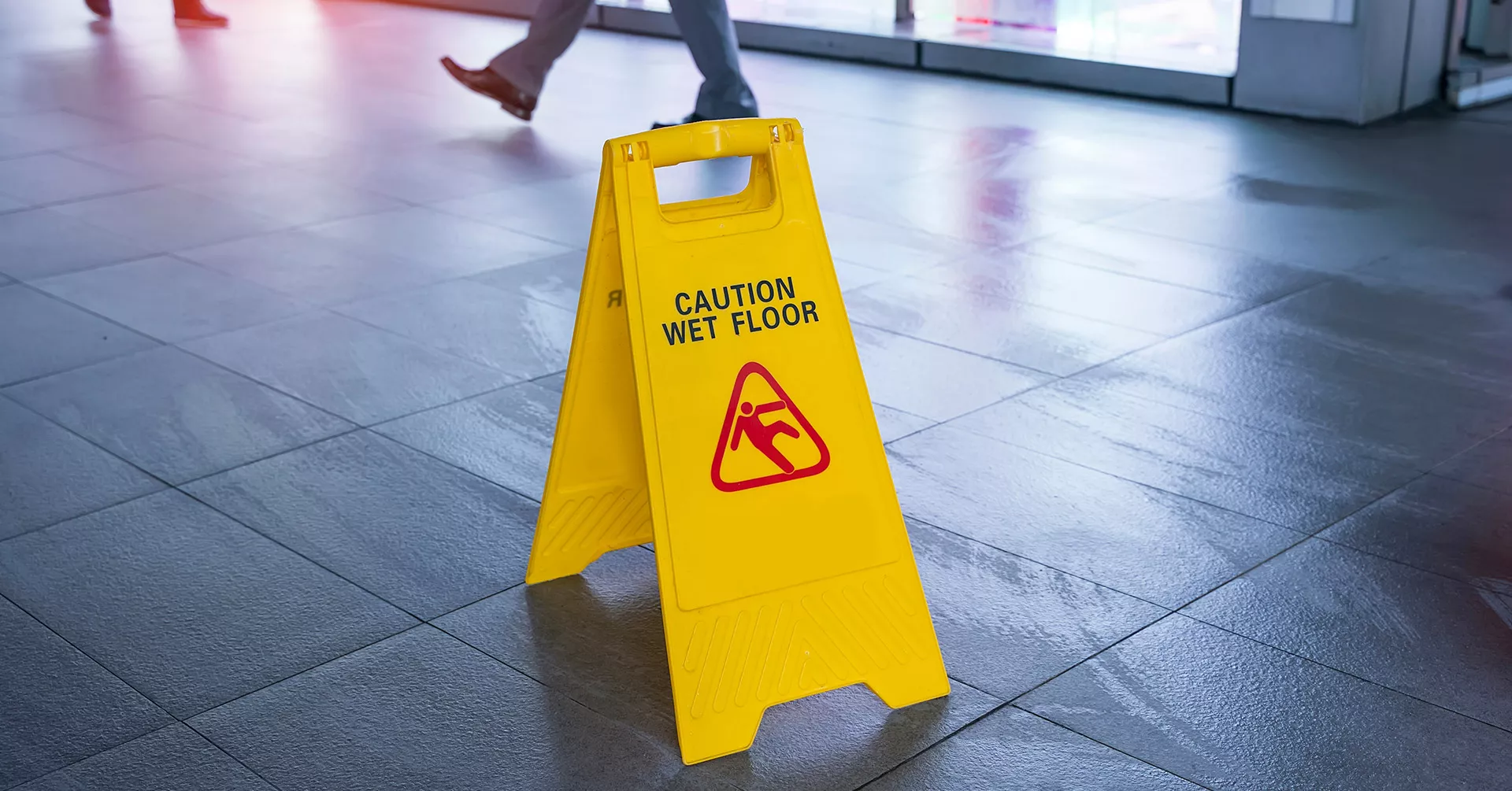
See something, say something
If you’ve passed through an airport or taken a subway train in the United States over the past two decades, you’ve probably noticed signage with slogans to the effect of, “see something, say something.” These reminders are encouraging situational awareness among passengers and giving them the confidence to call attention to behavior they find suspicious. The same principle can be applied to workplaces.
It’s natural for many of us to avoid confrontation and mind our own business. But at work, personal safety and business continuity are at risk. By instilling responsibility and accountability in all employees, you are cultivating a positive safety culture, which has even broader, lasting benefits for your organization’s resilience. If your workers, leaders, and policies encourage and reward employees for speaking up when they notice something amiss, your organization’s collective level of situational awareness will continue to grow and strengthen over time.
Allow for proper rest
According to the Mayo Clinic, adults need at least 7 hours of sleep per night. If they receive less, their cognitive functions decline; and if they continuously get too little, a sleep deficit can accumulate, further damaging an employee’s ability to think and act safely.
While you can’t oversee employees’ sleep schedules, you can ensure that their work schedules do not prevent healthy sleeping habits. You can also ensure that workers are taking regular breaks during the workday for brief physical and mental health support, helping them stay sharp. Some companies even encourage naps during the workday to increase productivity and physical health.
Training and Organizational Support for Situational Awareness
Situational awareness doesn’t develop in a vacuum—it requires a workplace culture that prioritizes vigilance and risk awareness. When organizations provide structured training, visible leadership support, and ongoing reinforcement, employees are far more likely to integrate situational awareness into their daily routines.
Building awareness through structured training
Formal training is one of the most effective ways to embed situational awareness into workplace culture. Organizations can implement a mix of training formats to reach employees at different stages of their employment and reinforce lessons over time:
- Onboarding sessions — Introduce new employees to the organization’s safety expectations from day one. For example, new hires at a distribution center might tour the facility with a supervisor who points out common blind spots, noise hazards, and emergency exits.
- Regular safety talks — Short, recurring discussions led by managers or safety teams help employees remain aware of risk. A weekly “safety moment” before team meetings is a straightforward way to maintain focus.
- Tabletop exercises — Discussion-based scenarios allow employees to mentally walk through how they would respond to a hazard, such as discovering an unauthorized person in a restricted area. These sessions highlight gaps in readiness without the cost or disruption of a full drill.
- Scenario-based drills — Practicing simulated emergencies under realistic conditions builds confidence and muscle memory. For instance, running a mock chemical spill response helps employees practice identifying risks, communicating with supervisors, and following containment procedures.
By layering these approaches, organizations create opportunities for employees to practice, reflect, and improve situational awareness over time.
Highlighting the impact of leadership engagement
Leadership buy-in is essential for situational awareness to become an organizational norm. When executives and managers actively participate in training, emphasize vigilance in team meetings, and respond constructively to employee concerns, they send a clear message: Safety is a priority at every level. Visible leadership engagement models expected behaviors and signals that safety isn’t just an initiative—it’s one of the organization’s core safety management initiatives.
Addressing customization and inclusivity in training
One-size-fits-all safety training rarely achieves lasting results. The most effective programs are tailored to specific roles, departments, and risk profiles. For example, warehouse staff may focus on equipment hazards, while office employees may emphasize cybersecurity vigilance. Inclusive approaches—such as offering training in multiple languages, adapting materials for different experience levels, and incorporating varied learning formats (visual, auditory, hands-on)—ensure situational awareness is accessible and relevant to every employee.
Using technology and tools for ongoing support
Technology can extend the reach of training beyond the classroom. Digital training platforms allow organizations to refresh skills on demand, while hazard-reporting apps make it easier for employees to flag unsafe conditions in real time. Collaboration tools like mobile communication platforms ensure alerts and feedback reach the right people instantly, reinforcing situational awareness in daily workflows.
Measuring and communicating outcomes
Organizations that measure the effectiveness of situational awareness programs can better sustain engagement and drive improvement. Tracking indicators such as incident rates, near-miss reporting, and employee survey feedback helps leaders identify progress and areas for growth. Just as importantly, sharing these results with employees reinforces the value of their vigilance and demonstrates the organization’s commitment to continuous improvement.
Leading by example
Employees take their cues from leadership. When managers consistently demonstrate situational awareness—such as pointing out hazards during walkthroughs, pausing before tasks to assess the environment, or promptly addressing reported risks—they model the behaviors they expect from their teams. Leadership buy-in communicates that situational awareness isn’t just a “safety program,” but a core organizational value.
Turning Awareness Into Resilience
Situational awareness in the workplace isn’t just an individual skill—it’s a collective discipline. By defining what situational awareness means, equipping employees with structured techniques like SLAM and OODA, and reinforcing these habits through organizational training and leadership support, businesses can create safer, more resilient environments.
The key is consistency. When employees practice situational awareness daily and leaders model and reinforce it across the organization, vigilance becomes second nature, delivering both the immediate benefits of situational awareness and long-term resilience. Technology, ongoing training, and clear communication keep awareness fresh, while measuring and sharing results reinforces progress and motivates continued improvement.
Every organization faces unique risks, but one principle holds across industries: Situational awareness is most effective when embedded into individual routines and organizational systems. Organizations turn awareness into an enduring strength by combining leadership engagement, tailored training, inclusive practices, and transparent feedback loops.

